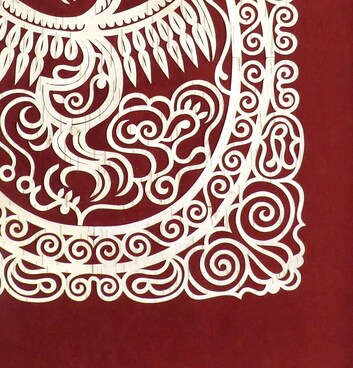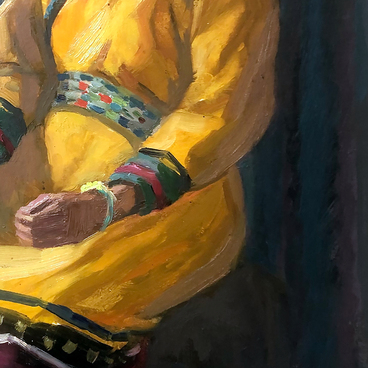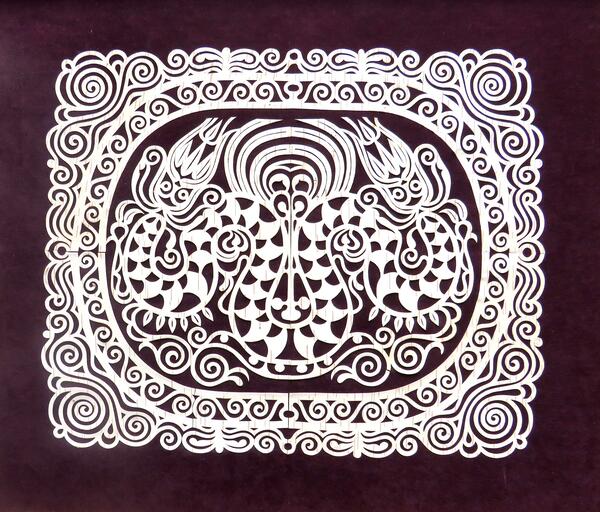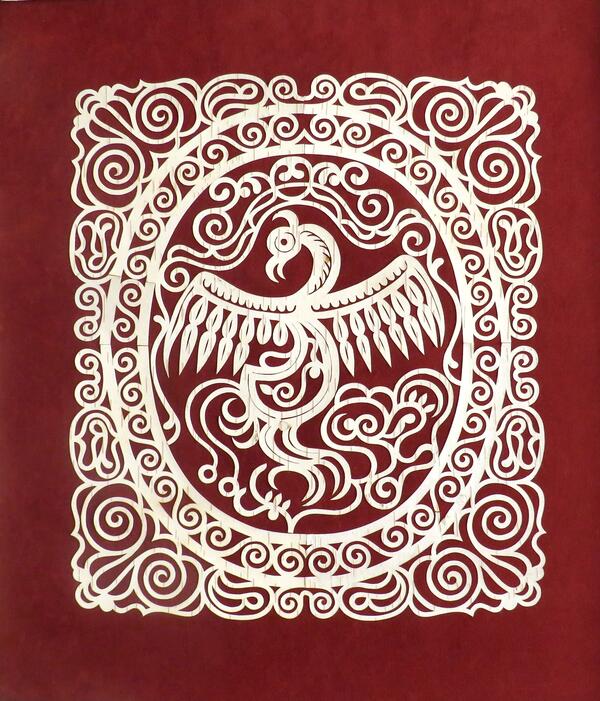Lyudmila Ulamovna Passar (1950–2012), the first professional Nanai artist, was born into an intellectual Soviet family. Her mother, Darya Stepanovna, worked as a veterinary nurse. Her father Ulama Vasilyevich, a staunch communist, was a history teacher who contributed greatly to promoting education in Amur villages. Ulama Passar was repeatedly appointed principal to schools that were yet to be built. When this happened, the whole family moved to new places where it was necessary to build a school building, hire teachers, assure parents of the future students of the importance of education, and establish the proper educational process.
The village of Naykhin, where Lyudmila Passar was born, remained a constant throughout her childhood. The girl spent a lot of time with her grandmother Boly, a craftswoman and storyteller. It was there that the future artist’s vision was formed.
In her works, Lyudmila Passar introduced the viewers to the family legends of the Siberian peoples. She also worked a lot on developing the theme of tales about Nanai families.
Apart from her childhood memories, the artist also drew inspiration from her trips to the Amur villages, where she gathered material for the subject matter and documented local tales and legends told by the elders. She retold those stories through cut-out patterns on birchbark sheets and left an explanatory description on the reverse of each of her works.
One of those tales tells a story of a hunter of the Kile family. Once he was chasing a wild Manchurian wapiti deer (“bochan”). The hunter pursued it for a long time, and when it got dark, was forced to spend the night right in the clearing under a sprawling oak tree. A beautiful young woman came to him in a dream and asked him to marry her. She was the deer that had led the hunter to the clearing. The man replied that he already had a wife he loved and refused. The same thing happened again the next night. On the third night, the woman deer told the hunter that he would not be able to leave the taiga without her help and would die if he rejected her love. Then the man agreed to make her his second wife. Their children were the first members of the Onenko family.
Lyudmila Passar reflected the unique art of Nanai people not only through the subject matter she chose but also through the use of unusual materials, such as thin birchbark sheets. All this makes the artist’s works truly exclusive.
The village of Naykhin, where Lyudmila Passar was born, remained a constant throughout her childhood. The girl spent a lot of time with her grandmother Boly, a craftswoman and storyteller. It was there that the future artist’s vision was formed.
In her works, Lyudmila Passar introduced the viewers to the family legends of the Siberian peoples. She also worked a lot on developing the theme of tales about Nanai families.
Apart from her childhood memories, the artist also drew inspiration from her trips to the Amur villages, where she gathered material for the subject matter and documented local tales and legends told by the elders. She retold those stories through cut-out patterns on birchbark sheets and left an explanatory description on the reverse of each of her works.
One of those tales tells a story of a hunter of the Kile family. Once he was chasing a wild Manchurian wapiti deer (“bochan”). The hunter pursued it for a long time, and when it got dark, was forced to spend the night right in the clearing under a sprawling oak tree. A beautiful young woman came to him in a dream and asked him to marry her. She was the deer that had led the hunter to the clearing. The man replied that he already had a wife he loved and refused. The same thing happened again the next night. On the third night, the woman deer told the hunter that he would not be able to leave the taiga without her help and would die if he rejected her love. Then the man agreed to make her his second wife. Their children were the first members of the Onenko family.
Lyudmila Passar reflected the unique art of Nanai people not only through the subject matter she chose but also through the use of unusual materials, such as thin birchbark sheets. All this makes the artist’s works truly exclusive.




